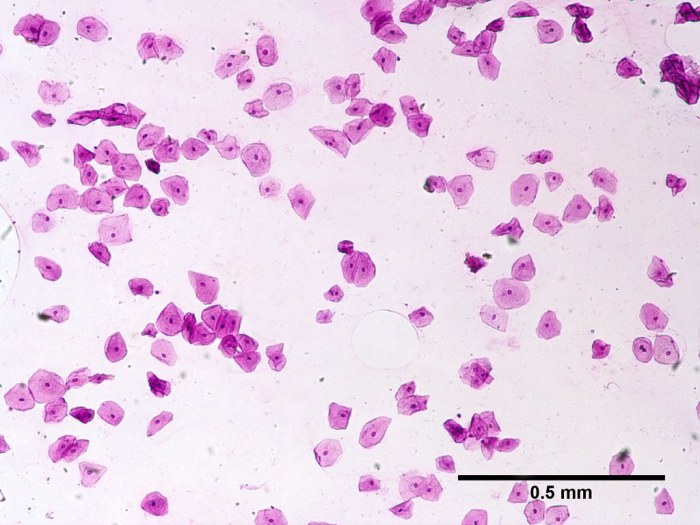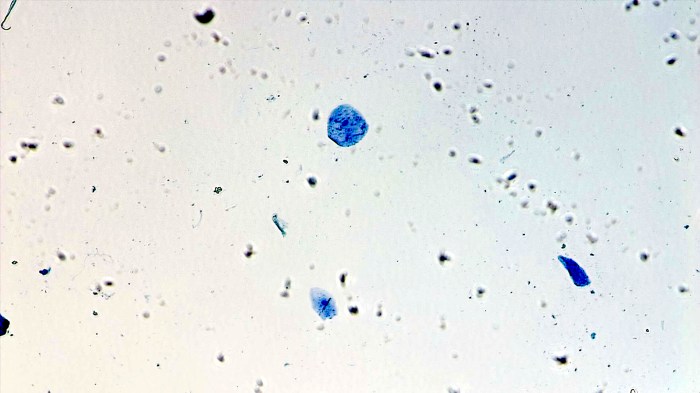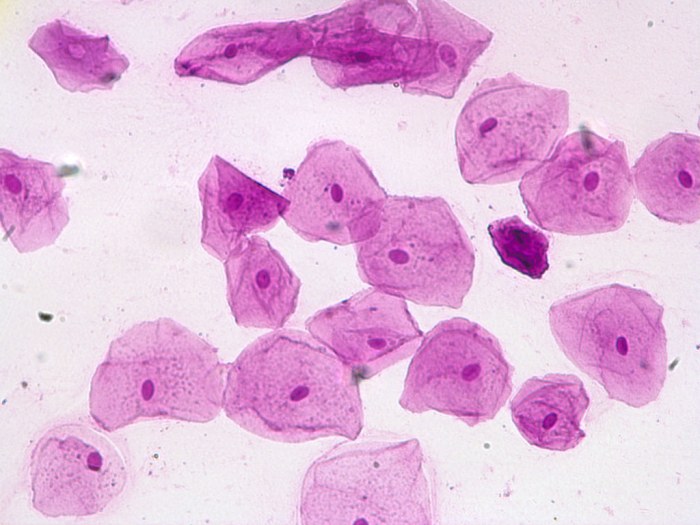Human cheek cell under microscope 100x embarks us on a captivating journey into the realm of cellular biology, where we delve into the intricacies of a single cheek cell magnified 100 times. This microscopic exploration unveils a hidden world teeming with life and complexity, providing invaluable insights into the fundamental building blocks of all living organisms.
As we peer through the lens of a microscope, the human cheek cell transforms into a miniature universe, revealing a symphony of organelles, each performing specialized functions that orchestrate the cell’s life cycle.
Overview of Human Cheek Cell Under Microscope 100x

A human cheek cell, also known as a buccal cell, is a flat, irregularly shaped cell found in the lining of the mouth. When observed under a microscope at 100x magnification, a cheek cell reveals a wealth of structural details and cellular components that provide insights into the basic principles of cell biology.
Cell Structure and Organelles: Human Cheek Cell Under Microscope 100x
Nucleus
The nucleus is the most prominent organelle in the cheek cell, appearing as a dense, round or oval structure in the center of the cell. It contains the cell’s genetic material, DNA, which is organized into structures called chromosomes.
Cytoplasm
The cytoplasm is the gel-like substance that fills the cell outside the nucleus. It contains various organelles, including mitochondria, endoplasmic reticulum, and Golgi apparatus.
Mitochondria
Mitochondria are small, bean-shaped organelles that generate energy for the cell through cellular respiration.
Endoplasmic Reticulum
The endoplasmic reticulum is a network of interconnected membranes that plays a role in protein synthesis and transport.
Golgi Apparatus
The Golgi apparatus is a stack of flattened membranes that modifies and packages proteins for secretion from the cell.
Cell Membrane
The cell membrane is a thin, flexible layer that surrounds the cell and controls the movement of substances into and out of the cell.
Cell Division and Replication
Mitosis
Mitosis is the process by which a cell divides into two identical daughter cells. It involves several stages, including prophase, metaphase, anaphase, and telophase.
Cytokinesis
Cytokinesis is the physical separation of the daughter cells after mitosis.
Chromosomes
Chromosomes are thread-like structures made of DNA that carry genetic information. They are duplicated before mitosis and distributed equally to the daughter cells.
Applications in Biology and Medicine

Medical Diagnostics, Human cheek cell under microscope 100x
Observing cheek cells under a microscope can aid in medical diagnostics, such as karyotyping (analysis of chromosomes) for genetic disorders and cancer screening.
Genetic Research
Cheek cells are a source of DNA for genetic research, including studies on genetic variation, inheritance patterns, and disease susceptibility.
Personalized Medicine
Genetic information from cheek cells can be used in personalized medicine to tailor treatments based on an individual’s genetic profile.
Educational Value
Observing cheek cells under a microscope is a valuable educational tool for students learning about cell biology and the basic principles of life.
Ethical Considerations

Informed Consent
Obtaining informed consent from individuals before collecting and using their cheek cells for research or medical purposes is crucial.
Privacy
Maintaining the privacy of genetic information is essential to prevent discrimination or misuse.
Potential Misuse
The potential misuse of genetic information, such as discrimination based on genetic predisposition to certain diseases, raises ethical concerns.
Quick FAQs
What is the significance of observing a cheek cell under a microscope at 100x magnification?
Observing a cheek cell under a microscope at 100x magnification allows us to visualize the cell’s internal structures and organelles, providing valuable insights into its function and overall health.
What are the ethical considerations associated with using human cheek cells for research and medical purposes?
Informed consent and privacy are paramount when collecting and using human cells for research and medical purposes. It is essential to ensure that individuals fully understand the implications of their participation and that their genetic information is protected from misuse or discrimination.